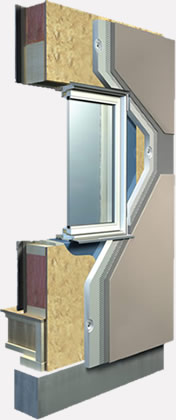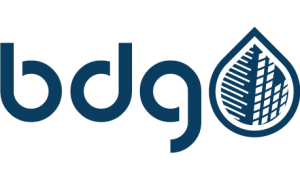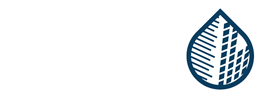
Our EIFS Inspections Services include:
Water Infiltration Analysis
Our Water Infiltration Analysis service provides moisture analysis of any structure with EIFS or Stucco cladding. The purpose of this inspection is to find excessive moisture content in the structural cavities and framing. Using industry standard inspection techniques and our high-resolution infrared thermography, we can identify sources of moisture intrusion. The observations are all documented in a detailed written and photographic report.
Third Party Inspections
This service is required on all field-applied EIFS installations of 10,000 SF or larger by the Building Officials Code Administrators International (BOCA Model Code).
Pre-Purchase Inspections
Pre-Purchase Inspection services are provided to owners, appraisers, and relocation services to ascertain that the EIFS is installed according to the system manufacturers.
Construction Inspections
Our Construction Inspection services are provided for all commercial and residential EIFS applications. We are available for nationwide travel to your site.
To schedule or learn more about any of these services, please use our online form to contact us or call today at (888) 317-4568.
Mold may be getting all the attention at the moment as a major threat to insurers, at least in Texas, Florida, and California, but another problem has wreaked havoc for homeowners, insurance carriers, and contractors nationwide for several years now–damages stemming from Exterior Insulation and Finishing Systems (EIFS), often referred to as fake or synthetic stucco.
EIFS is an exterior cladding system used on both commercial and residential structures. Typically, EIFS consist of an exterior finish, a reinforcing mesh, an insulator such as polystyrene, an adhesive to bind the insulator to the building, and foam board attached to the building itself. These systems have been touted as energy-efficient and flexible enough to accommodate myriad building and home designs.
EIFS has been in use for quite some time. Developed in Europe to repair buildings after World War II, the finishing system was first used in the U.S. by Dryvit in 1969, for commercial structures. In the 1980s, the residential construction industry began using EIFS, and since its introduction, homeowners from across the US have reported property damage due to moisture. Homeowners in states with humid climates have been most prone to EIFS-related damages.
Problems arise when moisture is retained between the sheathing of a house and the foam board component of the finish system. Over time, the house’s sheathing may rot, and attract termites. In addition, where there’s moisture, there’s always the potential for mold to develop. About 30 manufacturers in the U.S. make EIFS. EIFS is used in only 2 percent of the residential construction market. These systems have been applied in the United States and Canada for over 25 years and continue to grow in popularity. Currently, approximately 285 million square feet are applied annually, and the market continues to grow about 12 percent a year.
The problem is that the Styrofoam-type material does not breathe, and if it’s not properly installed—and that’s the critical issue–moisture can get trapped and cause sheathing damage. Some people would assert that even if it is properly installed, the design itself inherently causes moisture in a moist climate. Property damage related to EIFS has proved a highly litigious issue: The first class action suit against EIFS manufacturers was brought in North Carolina in 1995.
How do I know it is done right ?
It is recommended by many manufacturers to have an independent inspection during the installation of EIFS. A trained, knowledgeable inspector understands the proper installation of EIFS and is a valuable person to have by your side to ensure a quality project. Reputable contractors do not want problems down the road and welcome independent inspections. Building Diagnostics Group provides third party inspections. Call Toll-Free on (888) 317-4568 to learn more.
Why does EIFS fail ?
- Synthetic stucco is not an effective barrier system. It is impossible in the field to build a system which prevents water from reaching a home’s sheathing and studs. Newer systems incorporate a moisture barrier on the sheathing to drain the moisture and have a weep capability, which sheds the water;
- EIFS is a multi-component system, which potentially involves many different trades if it is to be installed correctly–namely, installers, roofers, framers, general contractors, painters, etc.;
- Manufacturers in the past sold EIFS as a low or no maintenance product. Nothing could be further from the truth. EIFS is a complex, unforgiving, and extremely high maintenance cladding;
- Many systems were installed without proper kick out flashing at roof wall intersections, and the absence of sill, header, and pan flashing at windows;
- Inadequate sealant joints around windows and doors, and other locations where synthetic stucco meets dissimilar materials such as wood; the absence of backer rods where there are sealant joints; the absence of sufficient caulking or sealant in these areas; the absence of sealants at penetrations where gutters, downspouts, and other fixtures are attached to the house;
- Insufficient thickness of the base coat. Base coat thickness is required to be at least one sixteenth of an inch;
- Inadequate back wrapping;
- The absence of a moisture barrier on the sheathing;
- Improper application of the foam panels, resulting in delamination and cracks, through which water intrudes;
- Absence of rough opening flashing around the windows, to permit the EPS board to be adhered to the sheathing directly;
- Bringing the synthetic stucco into the ground, providing a ready route for termites;
- Using the wrong kind of adhesion, or applying adhesives incorrectly, resulting in delamination, cracks, and moisture intrusion; misapplication of the mechanical fasteners which adhere the foam to the sheathing.

